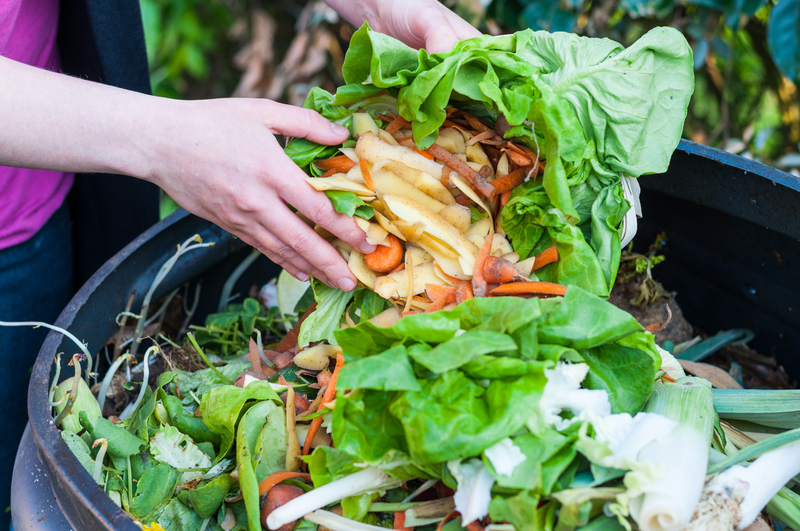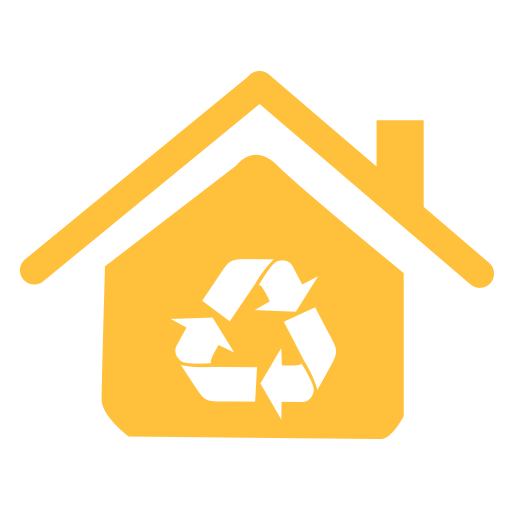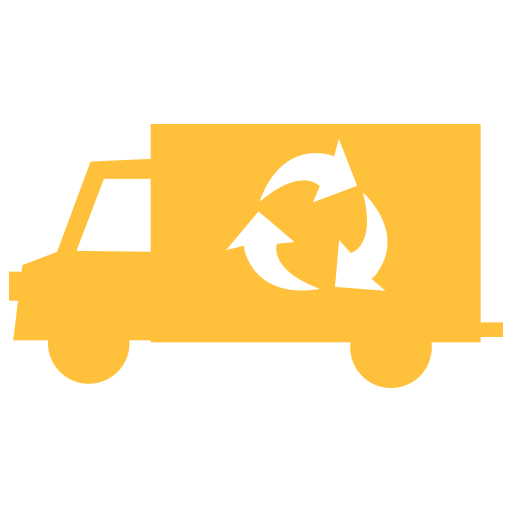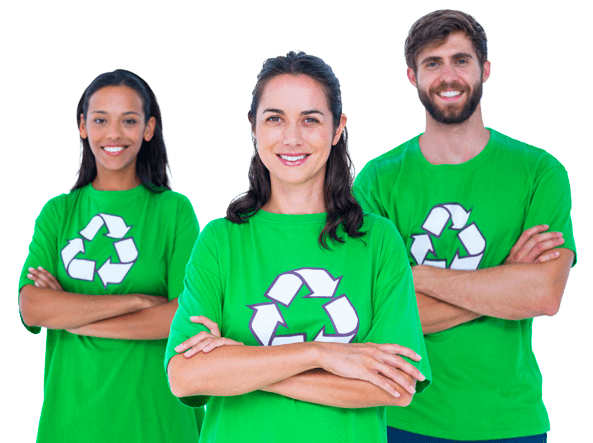Sustainable Cardboard and Packaging Waste Disposal
Posted on 14/10/2025
Sustainable Cardboard and Packaging Waste Disposal: A Comprehensive Guide
In today's fast-paced consumer society, the surge in online shopping and product shipments has made cardboard and packaging waste management an urgent environmental issue. Finding sustainable solutions for cardboard and packaging waste disposal is more critical than ever. This in-depth article explores eco-friendly disposal methods, recycling processes, reuse strategies, and the importance of sustainable materials in packaging waste management.

Understanding Cardboard and Packaging Waste
Cardboard waste refers mainly to corrugated boxes, carton packaging, and paper-based shipping materials. These account for a significant portion of municipal solid waste globally. Packaging materials, meanwhile, range from plastic wraps and foam inserts to glass and metals, but cardboard remains the most widely used due to its cost-effectiveness and recyclability.
The Growing Problem of Packaging Waste
- Consumer packaging accounts for nearly a third of municipal waste.
- Cardboard comprises up to 40% of packaging materials in the supply chain.
- Improper disposal leads to overflowing landfills and increased carbon emissions.
As online shopping and e-commerce flourish, the challenge of cardboard packaging waste disposal intensifies, pushing for innovative, sustainable practices.
Why Sustainable Cardboard and Packaging Disposal Matters
Adopting sustainable cardboard disposal and recycling habits brings multiple environmental and economic benefits:
- Reduces landfill burden: Sustainable practices keep recyclable materials out of landfills.
- Conserves natural resources: Paper and cardboard recycling saves trees, water, and energy.
- Lowers greenhouse gas emissions: Efficient cardboard recycling and reuse help mitigate climate change.
- Improves corporate social responsibility: Businesses embracing sustainability enhance their reputation and reduce costs.
Did You Know?
- Every ton of recycled cardboard saves about 17 trees, 7,000 gallons of water, and 380 gallons of oil.
- Recycling cardboard uses about 50% less energy than producing it from raw materials.
Key Strategies for Sustainable Cardboard and Packaging Waste Disposal
1. Reduce: Minimizing Packaging at the Source
The sustainable waste hierarchy begins with reduction. By minimizing unnecessary packaging and switching to eco-friendly, recyclable materials, companies and consumers can reduce cardboard waste generation significantly.
- Opt for products with minimum packaging.
- Choose cardboard made from recycled content.
- Support brands embracing green packaging solutions.
Many leading companies now design packaging with end-of-life in mind, using materials that facilitate easy recycling, composting, or reuse.
2. Reuse: Giving Packaging a Second Life
Before discarding, consider reuse strategies for cardboard boxes and packaging materials. Quality cardboard boxes can be reused several times for storage, shipping, or creative crafts.
Ideas to Reuse Cardboard Packaging:- Reuse shipping boxes for your own parcels or storage.
- Donate clean, sturdy boxes to local businesses, moving companies, or charities.
- Upcycle cardboard into crafts, children's toys, or organizers.
- Use packing paper and filler material for future moves or shipping needs.
3. Recycle: Closing the Loop in the Cardboard Cycle
Recycling is crucial for sustainable cardboard and packaging waste disposal. Corrugated cardboard (OCC) is highly recyclable but must be kept dry and free from contaminants such as grease, food, or plastic coatings.
Steps to Recycle Cardboard Effectively:- Break down boxes to save space in recycling bins.
- Remove tape, labels, and non-cardboard materials before recycling.
- Keep cardboard dry to prevent mold and contamination.
- Participate in local recycling programs or drop-off centers.
Check with your local municipality for accepted cardboard types. Not all recycling facilities accept food-soiled containers (like pizza boxes). Clean, dry, and uncontaminated cardboard has the best chance of being recycled into new products.
The Cardboard Recycling Process Explained
Understanding the journey of recycled cardboard highlights the impact of proper disposal:
- Collection: Cardboard is gathered from homes, businesses, and collection centers.
- Sorting: Facilities separate cardboard from other recyclables and sort by grade.
- Pulping: Sorted cardboard is mixed with water and broken down into fibers.
- Filtering: Non-fiber materials like tape and labels are removed.
- De-inking: Printing inks are washed out if present.
- Rolling and Drying: Pulp is spread, pressed, and dried into sheets.
- Conversion: New cardboard products are manufactured--often completing the recycling loop within weeks.
This process saves energy, conserves resources, and reinforces the importance of sustainable cardboard recycling practices.
Innovations and Trends in Sustainable Packaging Waste Management
The packaging industry is rapidly evolving to address sustainability challenges. Here are some innovative trends transforming cardboard and packaging waste disposal:
1. Compostable and Biodegradable Packaging
A growing number of businesses are shifting towards compostable packaging materials made from plant fibers, mushroom mycelium, or starches. These materials break down naturally, reducing landfill impact and promoting circular waste systems.
2. Zero-Waste and Returnable Packaging Systems
Some retailers are trialing returnable cardboard boxes or reusable shipping containers, slashing single-use packaging waste. These systems rely on consumer participation but greatly lower overall waste output.
3. Digital-Era Automation and Smart Sorting
Facilities now deploy AI-powered sorting lines and automated compactors to ensure optimal separation of recyclables, further improving cardboard packaging waste management.
4. Eco-Design in Packaging
Brands are reimagining packaging for easier recycling--utilizing water-based inks, minimal plastic, and clear disposal instructions. Such eco-friendly packaging helps customers make the right disposal choices and closes the recycling loop.
Business Best Practices for Sustainable Cardboard and Packaging Waste Disposal
Businesses can play a huge role in curbing packaging waste. Here are actionable steps to advance cardboard and packaging waste sustainability:
- Conduct regular packaging audits to measure usage and identify reduction opportunities.
- Switch to recyclable or compostable alternatives for shipping and product packaging.
- Educate employees and customers on recycling, reuse, and proper waste disposal.
- Partner with eco-friendly suppliers and logistics companies who prioritize sustainable packaging waste management.
- Join industry coalitions and certification programs promoting green packaging policies.
Corporate Social Responsibility and Branding
Emphasizing responsible waste practices enhances brand image, aligns with consumer values, and often results in cost savings. Certifications like FSC (Forest Stewardship Council) indicate responsibly sourced cardboard, boosting reputation and customer trust.
Consumer Actions: How You Can Help with Sustainable Cardboard and Packaging Disposal
Individual choices matter. Consumers have significant power to drive change toward sustainable packaging and cardboard waste practices. Here's how you can contribute:
- Buy in bulk or support minimal packaging brands.
- Request paper-based or recyclable packaging when shopping online.
- Break down and recycle all cardboard boxes properly.
- Compost cardboard when suitable and permitted by local guidelines.
- Advocate for sustainable packaging with your favorite brands.
Environmental Impact of Sustainable Disposal
Cleaner neighborhoods, reduced landfill pressure, and less resource depletion are direct results of responsible packaging waste management. Each action, whether recycling a box or reusing packaging, adds up to global environmental benefits.
Challenges and Solutions in Cardboard and Packaging Waste Recycling
Despite widespread recycling, several challenges persist:
- Contamination: Food residues and plastic coatings can render cardboard unrecyclable.
- Mixed-material packaging: Packaging that combines cardboard with plastics, foils, or wax is harder to process.
- Lack of consumer awareness: Misinformation leads to improper disposal.
- Market fluctuations: Recyclable material prices and demand can affect local recycling programs.
Addressing These Challenges:
- Promoting public recycling education campaigns
- Developing more recyclable, mono-material packaging solutions
- Improving infrastructure for commercial and municipal recycling
- Encouraging producers is to design for recycling and composting

The Future of Sustainable Cardboard and Packaging Waste Disposal
The future hinges on a circular approach--where materials are consistently reused, recycled, and repurposed. Government regulations, technological advancements, and consumer engagement are accelerating progress in the field of sustainable cardboard and packaging waste disposal.
Emerging Technologies
- AI sorting robots for higher recycling precision
- Biodegradable coatings replacing poly-based barriers
- On-demand custom packaging reducing material waste
Global Initiatives and Legislation
Countries worldwide are banning unrecyclable materials, mandating recycled content, and setting ambitious waste reduction targets. These policies encourage innovation at every step of the packaging supply chain.
Conclusion: Moving Toward a Greener Packaging Future
Adopting sustainable cardboard and packaging waste disposal practices is essential for protecting our environment, conserving finite resources, and creating a cleaner future.
Whether you are a business leader, eco-conscious consumer, or policymaker, your choices--reducing, reusing, and recycling packaging--directly impact the world we live in.
Together, through innovation, education, and community action, we can transform our approach to packaging waste and build a truly sustainable, circular economy.
If you're looking for more guidance on sustainable packaging waste management, reach out to your local recycling authority or environmental organization to learn about programs in your area.
Frequently Asked Questions (FAQ) on Cardboard and Packaging Waste Sustainability
- Is all cardboard recyclable?
Most clean, dry cardboard is recyclable. Avoid recycling heavily soiled or wax-coated materials. - How should I dispose of packaging with mixed materials?
Separate cardboard from plastics and other components before recycling. If not separable, check if your facility accepts them. - Can I compost cardboard?
Yes, plain cardboard (without plastics, heavy dyes, or coatings) can be composted in garden or municipal composting programs. - What can businesses do to reduce packaging waste?
Audit waste streams, opt for sustainable suppliers, and design packaging for circularity.
By making informed, proactive choices on cardboard and packaging waste disposal, we all help pave the way toward a sustainable future.

 020 3875 4121
020 3875 4121 020 3875 4121
020 3875 4121




 House clearance
House clearance Rubbish collection
Rubbish collection When it comes to your house clearance London you won’t find a better firm in town than London Rubbish Removal! We have a range of ways to...
When it comes to your house clearance London you won’t find a better firm in town than London Rubbish Removal! We have a range of ways to... London Rubbish Removal is just waiting to help you...
London Rubbish Removal is just waiting to help you...





